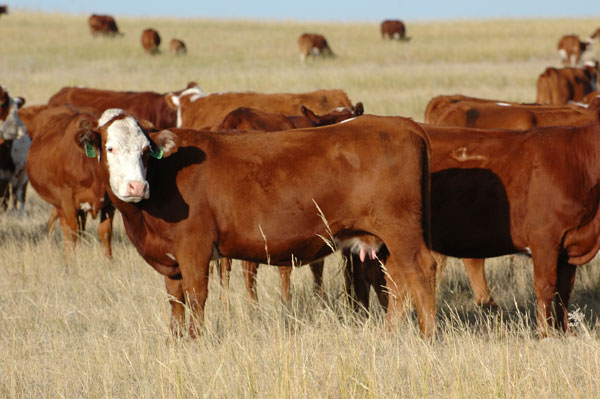Hoping to develop a great maternal herd? Cull hard and cull consistently.
February 28, 2019

I am aware of only a few great maternal herds. I am sure there are some of which I am unaware, however, the point is: there are not nearly enough. By great maternal herds I mean those that achieve pregnancy rates of 92-96% through good years and bad with little hay feeding and minimal supplementation of protein and minerals.
There are many herds that get good conception rates by relying on much winter hay feeding and good doses of supplemental protein and minerals and sometimes even grain and TMRs. Those are not great maternal herds because there is a high probability that they are unprofitable because of high input costs—especially in the tough years.
As I continue to work as a speaker for livestock producer meetings, I hear more and more stories of herds where conception rates were in a range of 90-96% a decade or two ago. Now they struggle to get conception rates exceeding 80%.
As I question further, it becomes apparent that their cows have gotten too big, are trying to produce more milk than their environments will allow and have too little or no heterosis. These cows have lower body condition in spite of often being fed much more in the winter. The owners are now either running fewer cows or buying more feed.
The great maternal herds are the ones that are most profitable at the ranch level. The cows have these characteristics: very good fertility; longevity; inherently good body condition; good udders; good feet and legs providing good locomotion; disease and parasite resistance; calving ease; young age at puberty; good dispositions and great mothering ability—this does not mean a lot of milk but the ability to deliver a healthy calf, stay mothered up on pasture moves or long drives and teach the calf how to eat and live in its environment.
These cows may not wean the biggest calves, but the calves grow well for the environment in which they are raised. While the calves may not perform as well as terminal sired calves in the feedlot, they should have very acceptable growth rates and feed conversion if they are slaughtered on time. The calves may even excel for the grass-fed niche.
The great maternal herds are characterized by cows that get pregnant as yearlings and again as 2-year-olds. They are good mothers raising good calves to an acceptable weaning weight. They maintain good body condition using mostly grazed feed with minimal supplementation.
Because of their self-sufficiency, they enable a significant reduction in the need for overheads such as calving facilities and tools, hay making and feeding equipment along with labor and fuel. These herds produce greater turnover as a result of their innate fertility and survivability.
Several steps can be taken to improve maternal traits in herds:
Over time, reduce dependence on fed feeds and supplementation.
Keep most of the heifer calves and expose them to bulls and shorten the breeding season to as little as 24 days. You may want to take several years to get this done.
Over a few years, shorten the calving season to 30 days for cows, but don’t shorten the breeding season. Create the discipline to cull the late-calving or late-bred cows before the next calving season. You may make the cut-off date a little earlier each year until you get the season as short as you want it. Once you get stabilized at 30 days, a high percentage will calve in the first 30 days. You will also be able to sell some good bred or late-calving cows to terminal breeders looking for good cows. Offer some each year and soon the buyers will come.
To make good maternal cows, only select bulls whose dams have always calved as a result of first cycle conception. If you select a bull from a first calf heifer, make sure that she also has calved in the first cycle as a 3-year-old before you make that selection.
Then stick to the cow culling protocol.
All open cows
All dry cows
All cattle with bad dispositions
Those that need to be handled
Those that raise poor calves
Ugly (your definition, but don’t be too tough)
Opens and dries which will make up most of the culls. If you routinely cull the others for several years, you soon won’t have many to cull in any given year and you will like your herd.
You see, you are letting nature and the bulls select your cows. The ones that fit your environment and management will be the ones that conceive, survive and stay. If they don’t fit, they won’t last nor do you want them to. The mothers of your bulls should be selected in the same way you select your cows.
Many of the emails I receive express an interest in reducing the size of cows. I think that is probably good in most cases; but, most importantly, you are trying to increase fertility and longevity while reducing inputs. You won’t do that if you continue to use the type of bulls that got you into big cows with poor fertility.
About the Author(s)
You May Also Like



